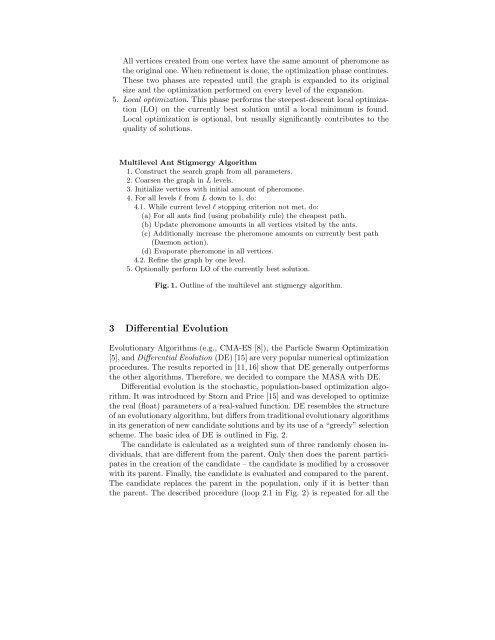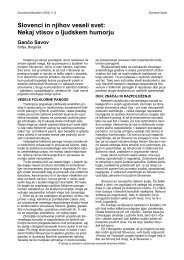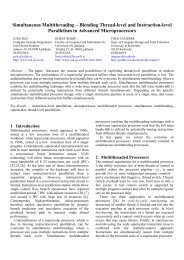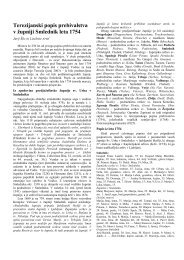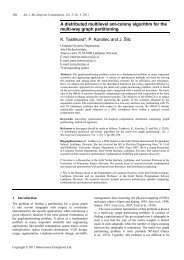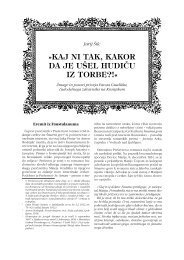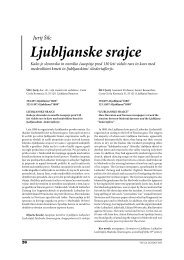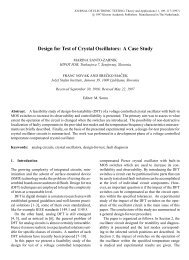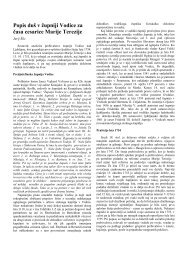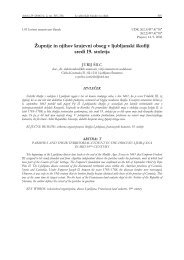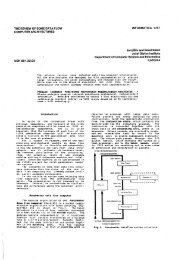A performance comparison of ant stigmergy and differential ...
A performance comparison of ant stigmergy and differential ...
A performance comparison of ant stigmergy and differential ...
Create successful ePaper yourself
Turn your PDF publications into a flip-book with our unique Google optimized e-Paper software.
All vertices created from one vertex have the same amount <strong>of</strong> pheromone asthe original one. When refinement is done, the optimization phase continues.These two phases are repeated until the graph is exp<strong>and</strong>ed to its originalsize <strong>and</strong> the optimization performed on every level <strong>of</strong> the expansion.5. Local optimization. This phase performs the steepest-descent local optimization(LO) on the currently best solution until a local minimum is found.Local optimization is optional, but usually signific<strong>ant</strong>ly contributes to thequality <strong>of</strong> solutions.Multilevel Ant Stigmergy Algorithm1. Construct the search graph from all parameters.2. Coarsen the graph in L levels.3. Initialize vertices with initial amount <strong>of</strong> pheromone.4. For all levels l from L down to 1, do:4.1. While current level l stopping criterion not met, do:(a) For all <strong>ant</strong>s find (using probability rule) the cheapest path.(b) Update pheromone amounts in all vertices visited by the <strong>ant</strong>s.(c) Additionally increase the pheromone amounts on currently best path(Daemon action).(d) Evaporate pheromone in all vertices.4.2. Refine the graph by one level.5. Optionally perform LO <strong>of</strong> the currently best solution.Fig.1. Outline <strong>of</strong> the multilevel <strong>ant</strong> <strong>stigmergy</strong> algorithm.3 Differential EvolutionEvolutionary Algorithms (e.g., CMA-ES [8]), the Particle Swarm Optimization[5], <strong>and</strong> Differential Evolution (DE) [15] are very popular numerical optimizationprocedures. The results reported in [11,16] show that DE generally outperformsthe other algorithms. Therefore, we decided to compare the MASA with DE.Differential evolution is the stochastic, population-based optimization algorithm.It was introduced by Storn <strong>and</strong> Price [15] <strong>and</strong> was developed to optimizethe real (float) parameters <strong>of</strong> a real-valued function. DE resembles the structure<strong>of</strong> an evolutionary algorithm, but differs from traditional evolutionary algorithmsin its generation <strong>of</strong> new c<strong>and</strong>idate solutions <strong>and</strong> by its use <strong>of</strong> a “greedy” selectionscheme. The basic idea <strong>of</strong> DE is outlined in Fig. 2.The c<strong>and</strong>idate is calculated as a weighted sum <strong>of</strong> three r<strong>and</strong>omly chosen individuals,that are different from the parent. Only then does the parent participatesin the creation <strong>of</strong> the c<strong>and</strong>idate – the c<strong>and</strong>idate is modified by a crossoverwith its parent. Finally, the c<strong>and</strong>idate is evaluated <strong>and</strong> compared to the parent.The c<strong>and</strong>idate replaces the parent in the population, only if it is better th<strong>ant</strong>he parent. The described procedure (loop 2.1 in Fig. 2) is repeated for all the


